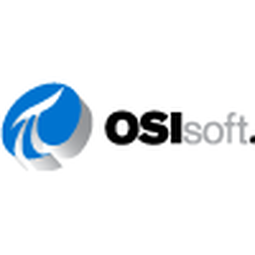Case Studies
-
(3)
- (1)
- (1)
- (1)
- View all
-
(3)
- (2)
- (2)
-
(2)
- (2)
- (1)
-
(1)
- (1)
-
(1)
- (1)
- View all 5 Technologies
ANDOR
- (1)
- (1)
- (1)
- (1)
- (1)
- View all 5 Industries
ANDOR
- (3)
- (1)
- (1)
ANDOR
- (2)
- (1)
- (1)
ANDOR
- (1)
- (1)
- (1)
ANDOR
- (4)
ANDOR
Please feel encouraged to schedule a call with us:
Schedule a Call
Or directly send us an email:
Compare
|
|

|
Inability to predict wind power supply limited how much power renewable energy sources could provide.
|
Download PDF
|
|
|

|
Every year, spring rains and snowmelt pour into the rivers and reservoirs that feed the City of Calgary’s water supply. As a result, downtown businesses and residents are faced with unpredictable floods that could do millions of dollars of damage. The City of Calgary turned to the PI System for a data-driven approach to predicting and managing flooding.Both the Bow and Elbow rivers flow through Calgary’s borders and provide fresh water to the system. These rivers carry the runoff, rainfall, and snowmelt from nearly 9,000 kilometers of land and the water is collected in two primary reservoirs managed by the City of Calgary. To ensure a safe, consistent, supply of water for its customers, the City of Calgary must keep a close eye on both the quality and quantity of water in these rivers and reservoirs. One of the biggest challenges in doing so is the region’s annual floods. Each year, between May and June, snowmelt, runoff, and rainstorms cause the water levels in the rivers to increase substantially. Preparing for flood-level waters is part of the utility’s annual plans, but predicting when, precisely, they would occur was another matter. Water tables can change quickly and the utility must balance flood risks against continuing to meet user demand and maintaining reservoir levels and water quality. During a flood event, the utility is faced with a surge in water volume through its system. Before water reaches the reservoirs, it must be treated and the sudden increase in volume caused by the floods often overwhelmed the treatment plants, resulting in quality issues. Furthermore, City of Calgary lacked timely information that would let it reduce reservoir volume in advance of a flood. As a result, emergency response often struggled to respond as flood waters reached downtown. The resulting damages — including residential and commercial insurance claims, water quality issues, system downtime, and regulatory fines — could total in the millions. To reduce the impact of floods on its customers and its business, City of Calgary, turned to the PI System.
|
Download PDF
|
|
|

|
CosaTron, a company that provides high-value, remote air quality monitoring services for building owners and facilities managers, faced a significant challenge due to the COVID-19 pandemic. The urgency to monitor indoor air quality increased exponentially among their customers. This was primarily due to the heightened awareness and concern about the spread of the virus in enclosed spaces. Additionally, customers expressed a need to review the indoor air quality themselves. This requirement posed a challenge for CosaTron as it necessitated a solution that could provide real-time, remote monitoring of indoor air quality sensors, which was not part of their existing service offerings.
|
Download PDF
|
|
|

|
Oil and gas producers face serious consequences if a downhole safety valve fails. In many cases, both company policy and government regulations require the well to be shut in for safety and environmental reasons. Some intervention-based tools allow the well to return to production, but unfortunately these tool designs, often decades old, are fraught with technical challenges, which can diminish the total production potential of the compromised well and the range of the well’s functionality.Tendeka, a provider of completions technology to the oil industry, developed an innovative smart valve that relays information bi-directionally from the downhole to the surface and can also be controlled wirelessly from the surface. The valve transmits regular wireless signals to the surface, which convey important information about downhole conditions and well operations. The valve allows wells to be returned to production during testing, while also providing the required downhole closure capability, should it become necessary to shut in the well. With this deployment of Electronic Ambient Valve (EAV) and Edge Data Storage (EDS) technology, Tendeka wanted to prove that continuous monitoring of the valve function could be conducted by both the operator and Tendeka personnel in headquarters.
|
Download PDF
|
